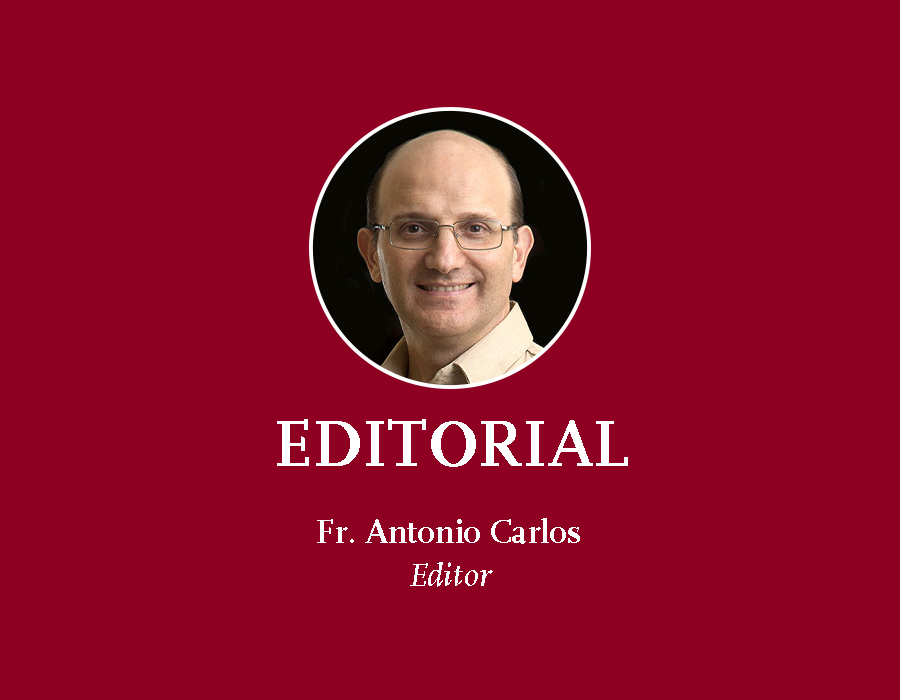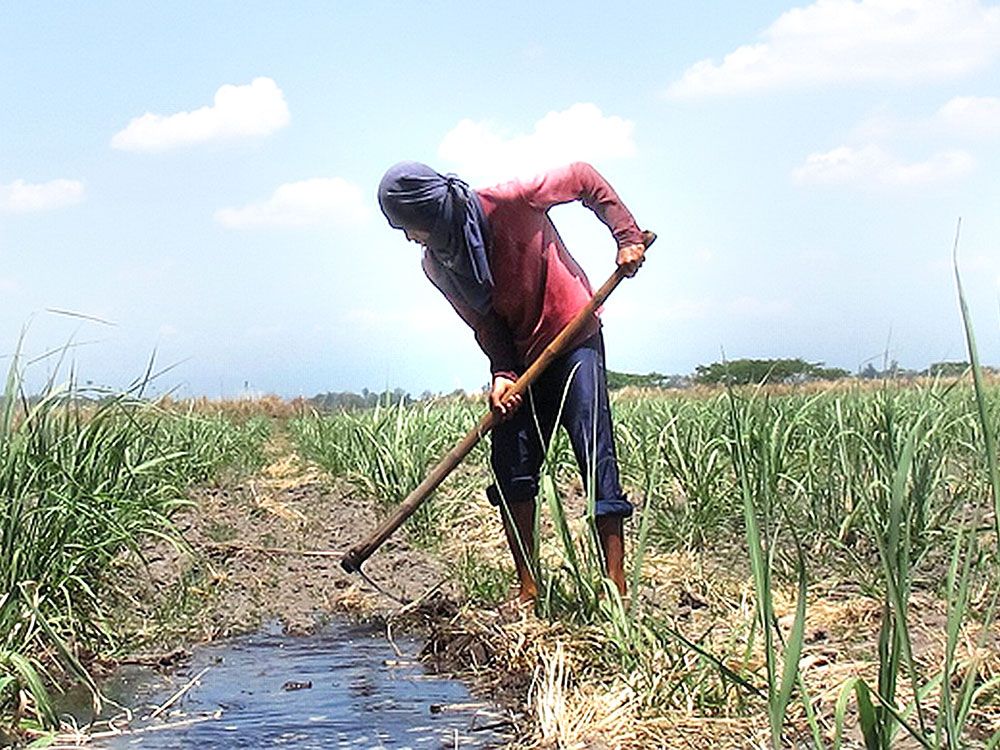In Europe, autumn, so rich in shades of color and of fruits, is a period of serene transition to winter which, in contrast, plunges nature and man to pause and take time to reflect on the deep meaning of our existence. In our social life, however, we enter a new year that we qualify, according to the circumstances, as academic, pastoral, work or simply one of activities. It is a fresh start, always new and exciting because of its novelty. However, it can also very quickly slide into the tedium of the monotony of everyday life, especially when we are weighed down by our responsibilities in life.
St. Matthew with his “patrimony” over this “season” can offer us consoling words and a stimulating testimony to begin, serenely and optimistically, this seasonal phase of our lives, allowing us to fight against any feeling of pessimism we might be going through due to certain setbacks from a social crisis or from other more personal crises!
THE MAN: Not to be recommended
When we’re used to hear the name of a person and to come across that person (in this case through the Gospel), we are in for a surprise when we realize how little we know or nothing about that person—his personal life, his origin, his background, his struggles, his most intimate sorrows and joys. This could be the case with regard to Matthew.
The man is called Levi in the Gospel of Mark; and of Luke, son of Alphaeus (Mark 2:14); and Matthew, in his Gospel (and in Acts 1:13), the Greek for the Aramaic name Mathai which means “gift from God.” This double name Levi-Matthew is not uncommon. Remember the names of Simon-Peter and Saul-Paul? As for his origin, Matthew is said to be from Capernaum (Matthew 9:9), a little place of some importance next to the Lake of Galilee.
He was a publican or a tax collector, a well-paid job but rather unpopular because of his contact with the oppressors (the Romans). By the very nature of the job, tax collectors have always been hated since time immemorial for obvious reasons. The collector bought from the Romans, by contract, the right to levy taxes directly on merchandise in transit. This gave ample room for injustice, abuse and corruption.
Apart from the narrative of his vocation and of the route he took, together with the group of the Twelve, we know little more about him. Tradition says he evangelized in Persia and, more probably, in Ethiopia where he was martyred.
THE DISCIPLE: A surprising vocation
Levi-Matthew’s vocation appears in the second wave of calls made by Jesus, after Peter and Andrew, James and John, Philip and Bartholomew. Therefore, his name appears at the beginning of the second half of the list of the Twelve, in 7th or 8th place.
The Gospel of Matthew describes this vocation in just one verse: “As Jesus was walking on, he saw a man named Matthew sitting at the tax office, and he said to him: ‘Follow Me.’ And he got up and followed Him” (9:9).
This calling must have been a surprise for everyone, most of all for Matthew. The famous painting of Caravaggio (which is in Rome, in the Church of St. Louis of the French, dating back to 1600) expresses this scene well. Jesus unexpectedly enters the place where Matthew is seated at a table with other work colleagues. With His arm outstretched and His forefinger pointing at Matthew, Jesus calls him. With his right hand counting the money, Matthew appears pointing to himself with his left forefinger, as if asking: Me? And Peter seems to confirm: Yes, you, you!
Caravaggio reveals in this painting his great artistic genius, not just limiting himself to representing the evangelical account but rereading it and adapting it to his/our time, revolutionizing the rules of the iconographic. The five characters around the table are portrayed with “modern” luxurious robes, whilst Jesus and Peter are clothed in humble robes from the past.
The meeting takes place in a tavern or patio cast in darkness that is broken by a beam of light coming from “above”. From the side, Jesus comes into the picture, with Peter. The canvas catches in a split of a second the vocation, with the light of that impromptu bright flash. The gesture of God’s hand is taken from the famous fresco of the creation of Adam, by Michelangelo in the Sistine Chapel. Caravaggio wants, in this way, to show Jesus as the new Adam, and vocation as a new creation. Peter, situated in front of Jesus, repeats the same gesture, although with less determination, to indicate the mediatory role of the Church.
But in Caravaggio’s painting, who is Matthew in reality? It is not clear and it continues to be a controversial question. Perhaps Caravaggio wanted to create a certain ambiguity or a sort of suspense. That imperative FOLLOW ME is directed to which of the five? Although all five heard it, such a call finds a different “echo” in each of them: surprise, curiosity, perplexity, indifference, worry…
Recently, a new interpretation was given to the canvas. Matthew wouldn’t be the bearded, half-bald character in the middle of the group, as generally was thought, but the young man with hair, to the extreme left of the picture, leaning over the table, focusing his attention on the money that had been handed over to him. In that case, the character in the center would be pointing at this young man, perhaps with some amazement, scandalized: Who? Levi, this publican sinner?
Then, the one who seems the farthest away physically and spiritually, where the conditions for a vocation are almost zero, is in reality the one marked by the light and pointed by Jesus’ forefinger. Moreover, I wonder if the leaning over the table and the money, seemingly ignoring the presence of Jesus, was an attempt of Matthew to ignore the calling or, otherwise, an intense and decisive moment of reflection.
This new “identity” of Matthew would highlight even more the gratuity and the unpredictability of the Spirit which “blows where it wills.” Perhaps a warning for the Church, that tends to increasingly reduce the areas and environment where to sow the Word and to “fish” for shepherds. God also works beyond our borders. “Promotion of the vocation” should breathe openness, trust and optimism! Matthew’s vocation is an eloquent case for the “season” we are now living in the world.
THE APOSTLE: A witness of the Gospel
Matthew wrote his Gospel particularly thinking about the communities of Palestine. He is the scribe from the Kingdom who takes from his treasure “new things as well as old” (13:52). His Gospel presents Jesus as the new Moses who comes to fulfil the Law (5:17), but he also offers us the “beatitudes” (5:1-12) and presents love as the supreme criteria in the final judgment (25:31-46).
Although strongly rooted in the Jewish tradition, Matthew does not cease to highlight the dramatic consequences of the refusal of the Messiah by the people of Israel (21:33-42), who will be substituted by poor people gathered at crossroads and along the paths of the world. He is also the only one to mention Jesus’ missionary work in Syria (4:24).
The ecclesial subject is one of Matthew’s worries (note the use of the term ekklesia: 16:18; 18:17) but he is also the evangelist whose mission is for “all nations” (28:19-20). Matthew, the apostle of a poly-faceted Gospel that integrates and harmonizes diversity, is a good model for the present ecclesiastical “season.” In fact, the Church today seems to be increasingly divided into different sectors in spite of the growing attempts to make it “monolithic.” The varying sensitivities find it difficult to show reciprocal respect for each other. The difference is not seen as a possible enrichment for “Catholicism” but as a hidden threat for “unity.” A Church that won’t let itself be challenged by “diversity” will become progressively isolated, becoming an excluding “fortress,” closed to most. The Church should, however, be a Mother who welcomes, inclusive by nature.
May the campaign for the “new evangelization” be a suitable occasion to recover the “catholic breath” of the Gospel, bequeathed to us by Matthew! He is Jesus’ privileged witness, Jesus who does not exclude anyone from His friendship and sits at the table of publicans and sinners. From that “pulpit,” He says to us: “Go and learn the meaning of the words: Mercy is what pleases Me, not sacrifice” (9:13).






















